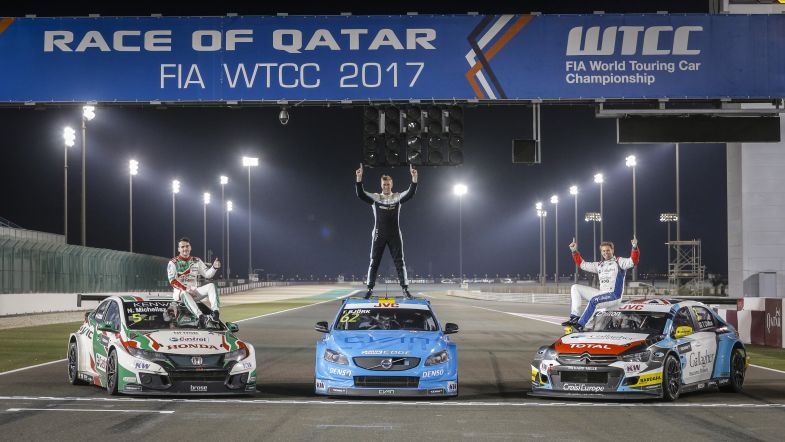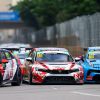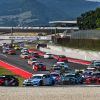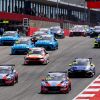How did Honda manage to lose the 2017 championship?
After many years of domination by one manufacturer, first Chevrolet and then Citroen, the 2017 (and for now, final) World Touring Car Championship season delivered an intensely close battle between two different manufacturers; but while Thed Bjork and Volvo walked away with the titles, we look at to what extend Honda gave them away.
The new champion Thed Bjork was quick to declare it was his cool head and consistency that won him title championship. And he’s absolutely right in his honesty. First, just looking at how he fared against his own Volvo Polestar team-mates, it’s already clear. More often than not, his team-mates Nicky Catsburg and Néstor Girolami were faster, but both ran into more bad luck, or made too many mistakes, while Bjork was always there grabbing the points.
For a champion to have taken only one pole position and two victories is almost unheard of; such a lack of outright results hasn’t been seen since the 2005 season, when BMW driver Andy Priaulx won the first drivers’ title of the new WTCC era, with one victory in Germany, and one pole position at Macau.
While Bjork’s consistency was key to his championship, it was Honda’s inconsistency which cost the Japanese marque their second manufacturers’ title, and both of their shots at the drivers’ championship.
We look at the five points where Honda’s season fell apart.
Norbert Michelisz starts on the wrong foot
Our eventual championship runner-up, Norbert Michelisz, had a rough start to the season, and lost a number of points in both of the opening races in Italy and Hungary with a pair of DNFs.
Incidents with Citroen driver Mehdi Bennani at Monza, and title rival Thed Bjork at his home race in Hungary, cost him at the very least two podium results, which would easily make up for his end of season deficit to Bjork.
A distraught Michelisz solemnly declared his title challenge was over just after his home race, the third event of the ten-race season. His colleagues, quite rightly, judged his words as premature, but in the final reckoning, without these early contacts, or if the Civic WTCC wasn’t so fragile, the championship would have been his.
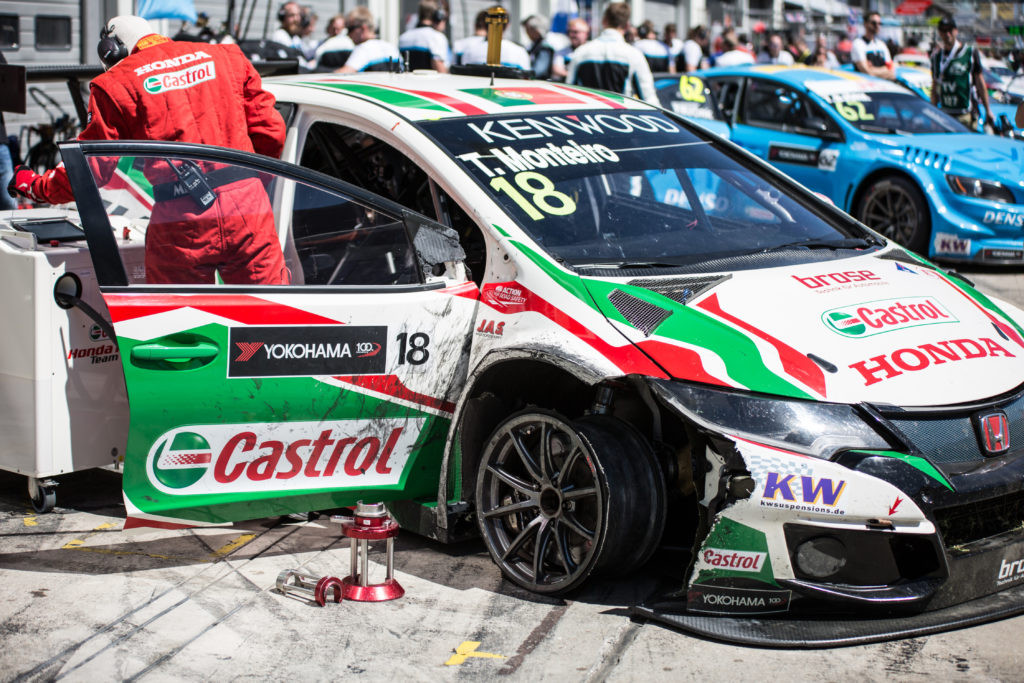
Tiago Monteiro tyred out at the Nordschleife
While Michelisz had written off his championship after Hungary, team-mate Tiago Monteiro was in a much better position. With two victories and four podiums up to this point, the Portuguese driver was leading the championship, but was not getting ahead of himself, realising both the strong threat from Volvo, and not writing off his Hungarian team-mate, despite Michelisz’s own resolution to start helping Monteiro from this point.
It was from Germany that Michelisz’s season began to turn around, as he placed his Honda on pole position, while Monteiro seemed a little off the pace at the epic Nurburgring Nordschleife; the circuit which arguably derailed his 2016 season 12-months earlier, with a last-lap crash in Race 1 which saw him sent to hospital.
Monteiro and Honda were clearly tackling the track with more caution this time, while it was Volvo who were the first to run into a tyre problem, with Néstor Girolami crashing out early in the first race.
While teams exceeding Yokohama’s recommendations i were the cause of a series of punctures last year, this year an unexpected heatwave disrupted all of Yokohama’s calculations, and Monteiro and Honda could claim innocence but certainly bad luck, as he punctured out and hit the wall in Race 1.
With no time to repair the car in time to make his grid position for the start of Race 2, he was forced to start from the pit lane and had no chance to get into the points, as he also had to fight his way through the supporting field of ETCC cars during the race’s short three laps.
Although Monteiro lost the lead of the championship to Volvo’s Nicky Catsburg, the Dutchman suffered a pair of punctures two races later in Argentina, and the balance was restored, with the 41-year-old going into the long summer break back in the lead of the championship.
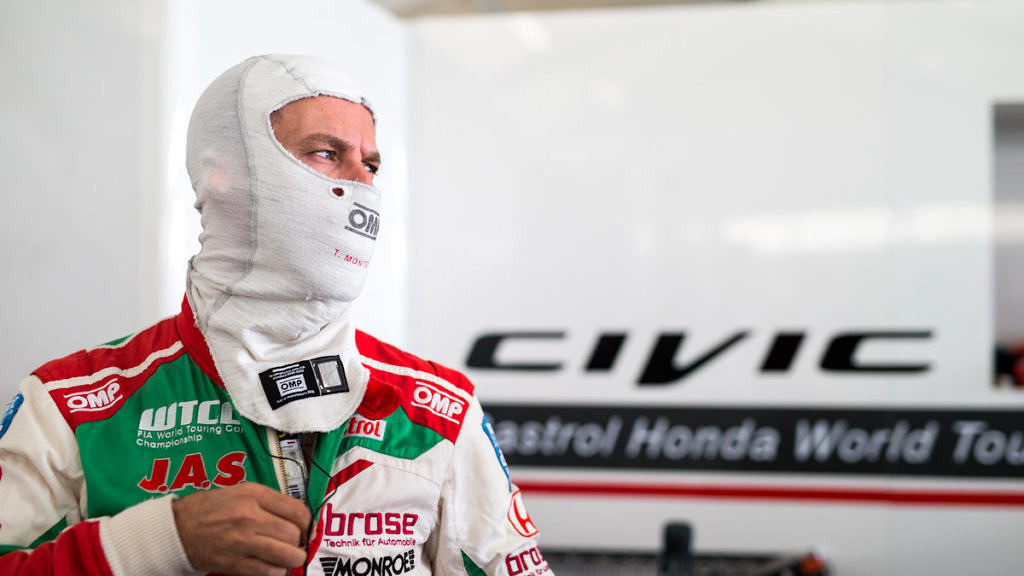
The mid-season test: the championship leader is out
The darkest moment of Honda’s season occurred at the start of September, during a mixed PR and test event scheduled at the Circuit de Catalunya in Spain.
After two days of PR fun, the Honda team were ready to take to the track for two days of testing with the WTCC test car as they prepared for the final assault, with their race cars well on the way to China.
With the PR activities finished ahead of plan, the team saw the opportunity to get the test started early, sending Monteiro out in the afternoon, but a complete brake failure at the 90 degree right-hander which is Turn 1 saw Monteiro smash into the barriers and suffer extensive injuries.
Knocked unconscious in the impact, the Portuguese driver has spent the last few months recovering, with temporary damage to his vision the most of obvious, if not actually the most significant of his injuries.
Although Honda played down the extent of the crash, it became very clear early-on that Monteiro’s season was almost certainly over, and the team recruited first former driver Gabriele Tarquini, then upcoming WTCC star Esteban Guerrieri to join the team and help support Michelisz as their only contender for the title, with third driver Ryo Michigami still coming to terms with the WTCC in his first full season.
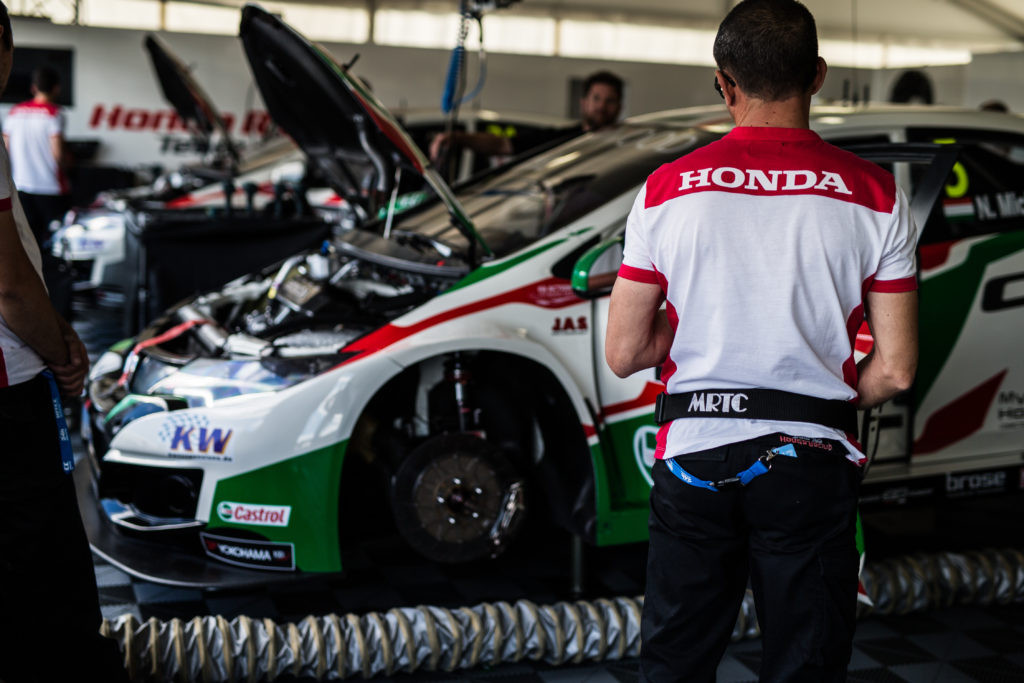
Exclusion means Honda gets to takeaway nothing from China
In 2016, Honda hit the headlines when they were excluded from the Moroccan round of the championship for an illegal flat floor on their Civic WTCCs.
The team were not found guilty of outright cheating, but it was deemed that their interpretation of the technical regulations did not quite match up with the FIA’s.
It was therefore a shock to see more-or-less the same thing happen again in China this year.
A set of updates to the Honda Civic were marked for further investigation during the weekend, and the results of the race, which had seen Norbert Michelisz take victory, albeit only half-points in an rain-shortened race, were nullified later in the month in Japan.
This was essentially another gift to Volvo. For a team to be found just on the outside of the technical regulations at least shows they were pushing the envelope and trying to find as much performance as they can, another regulation breach for the Japanese team was still bad news in terms of publicity, but critical in terms of results.
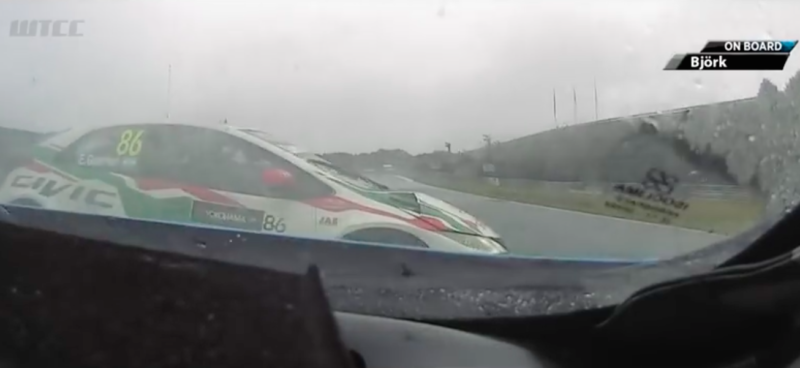
The final brake-down
Despite the China crisis, Honda hit back like a wounded animal over the next two events. A rain-soaked Motegi saw some of the toughest racing of the season, with new charge Esteban Guerrieri getting stuck straight into Volvo’s lead challenger Thed Bjork, which saw them forced to go on the defensive.
Michelisz picked up another victory, and the team went to Macau and scored big; whether Michelisz’s hit with the wall late in the first of the Guia races was the result of pressure, or just typical of the madness of Macau, he came away with another strong haul of points, and brought the gap down to just 6.5 going to the season finale at Qatar.
With full weight on the Hondas and the Volvos, speculation was rife on how this would play out, and those in the know thought it was likely that the Losail circuit would play to Volvo’s strengths, and even Citroen’s, and Honda had probably now had their fun.
This was very quickly proven wrong, as Michelisz dominated free practice, breaking Jose Maria López’s lap record and giving Volvo a sleepless night, with the Swede’s working to find more pace from their car for Friday afternoon’s qualifying session.
The improvements the Swedish marque made were mostly academic, as in the second part of qualifying, Michelisz suddenly lost two seconds in the final sector, the moment which was the one that finally cost the Hungarian the title. It was the sign of another brake problem for Honda. Michelisz’s lap was only good enough to put him 11th on the grid.
There was nothing Michelisz could do from that position, with the TC1 cars so well balanced, and all three Volvos starting ahead of the Hungarian at the Qatari circuit.
Thed Bjork went on to take the drivers’ title, with Polestar Cyan Racing winning the manufacturers’ trophy in their second season in the championship, with Honda, Monteiro and Michelisz having to ponder what might have been.
While there’s no question that during the last three years, there was nothing that Honda could have done about Citroen, this year, the championship was theirs to lose, and unfortunately, they lost it.
